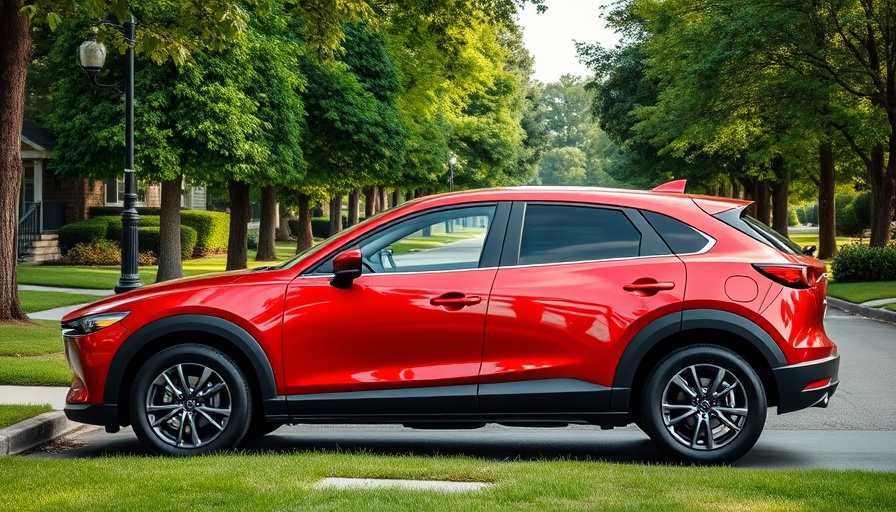
The Rise of Hybrids and PHEVs in America
The automotive landscape in the United States is rapidly evolving as consumers increasingly seek vehicles that balance performance and fuel efficiency. With gas prices continually on the rise, hybrid and plug-in hybrid electric vehicles (PHEVs) are gaining attention. This shift is not merely a trend; it's becoming a crucial choice for those who are conscious about their environmental impact and financial savings.
American-Made: Supporting the Domestic Economy
As the demand for hybrid vehicles grows, more consumers express a willingness to support American-made products. According to recent surveys, 73% of buyers consider the origin of their vehicles, prioritizing those built in the U.S. This preference is partly due to fears of tariffs that could affect pricing. The Cars.com American-Made Index helps consumers make informed decisions by ranking vehicles based on their contributions to the U.S. economy, factoring in final assembly locations, parts sourcing, and more.
Top Hybrids and PHEVs Made in America
Here we highlight some of the top hybrids and PHEVs that maintain impressive rankings on the American-Made Index. Not only do these vehicles support local jobs, but they also boast features that enhance their appeal in today's market.
- 2025 Ford F-150 Hybrid - Ranked 61st
- 2025 Chevrolet Malibu Hybrid - Ranked 45th
- 2025 Toyota RAV4 Hybrid - Ranked 40th
- 2025 Lincoln Corsair Plug-In Hybrid - Ranked 27th
- 2025 Honda CR-V Hybrid - Ranked 20th
Examining the Pros and Cons of Hybrid Vehicles
Hybrids and PHEVs bring a host of advantages, such as reduced fuel costs and fewer emissions, aligning with environmental and financial goals. However, potential buyers should also be aware of certain challenges, including battery replacement costs and limited driving ranges for some models. A thorough understanding of these pros and cons allows consumers to make informed purchasing decisions.
Real-World Performance: Fuel Efficiency Comparisons
A major selling point for hybrid vehicles is their fuel efficiency. Many new hybrid models can achieve impressive miles per gallon (MPG) ratings, particularly in city driving conditions. For example, the Ford F-150 Hybrid showcases a combined MPG of 22, appealing to truck enthusiasts looking for savings at the pump. Consumers can utilize car comparison tools to evaluate these statistics against traditional gasoline models to determine which option delivers greater value in the long run.
Future Predictions for the Hybrid Market
As technology advances, the hybrid vehicle sector is likely to experience significant growth. Automakers are focusing on enhancing battery technology, which will not only improve drive ranges but also reduce costs in the long run. In fact, industry analysts predict that hybrids and electric vehicles will make up an increasing share of car sales, responding directly to consumer demands for efficiency and sustainability.
Addressing Common Misconceptions
Despite the clear advantages of hybrids, several misconceptions still persist. Many people believe that hybrids are not as powerful as their gasoline counterparts or that they require unnecessarily high maintenance. In reality, advancements in hybrid technology have resulted in robust vehicles that can compete in performance while offering lower maintenance costs due to fewer moving parts and less wear on engines.
Taking Action: Why Now is the Time to Consider a Hybrid
With the landscape of automotive choices evolving, there's no better time to consider a hybrid or PHEV vehicle. Not only are these cars built to aid in reducing your carbon footprint, but they're also aligned with American manufacturing practices that contribute to the economy. As you think about your next vehicle purchase, consider the benefits of hybrids, and take the opportunity to invest in a vehicle that reflects your values.
 Add Row
Add Row  Add
Add 




Write A Comment